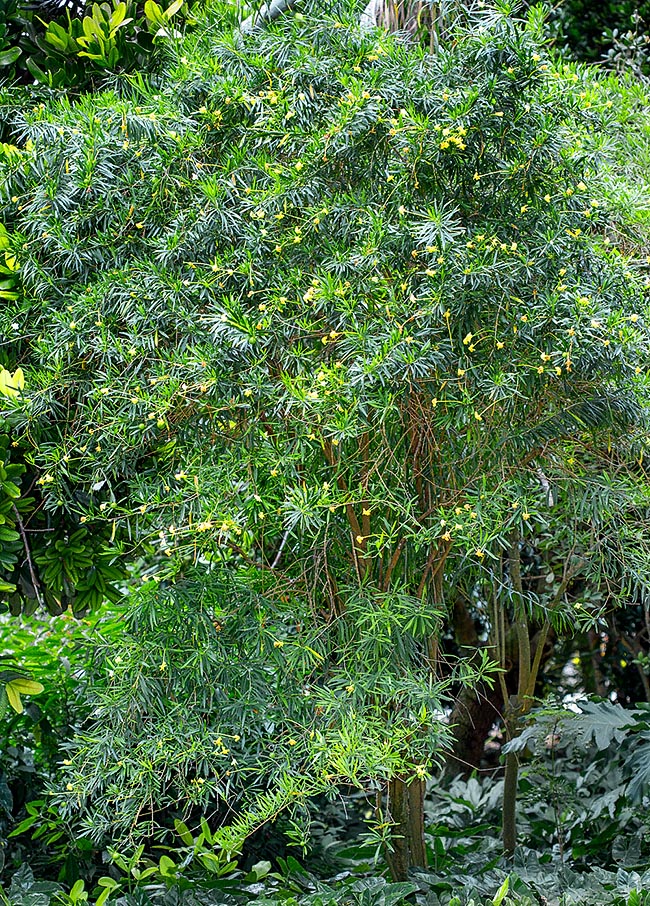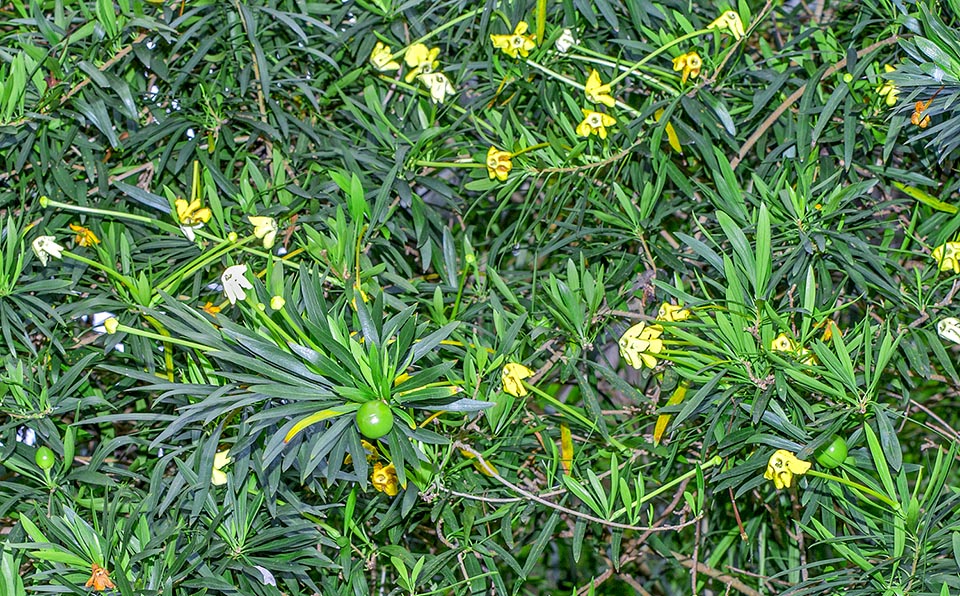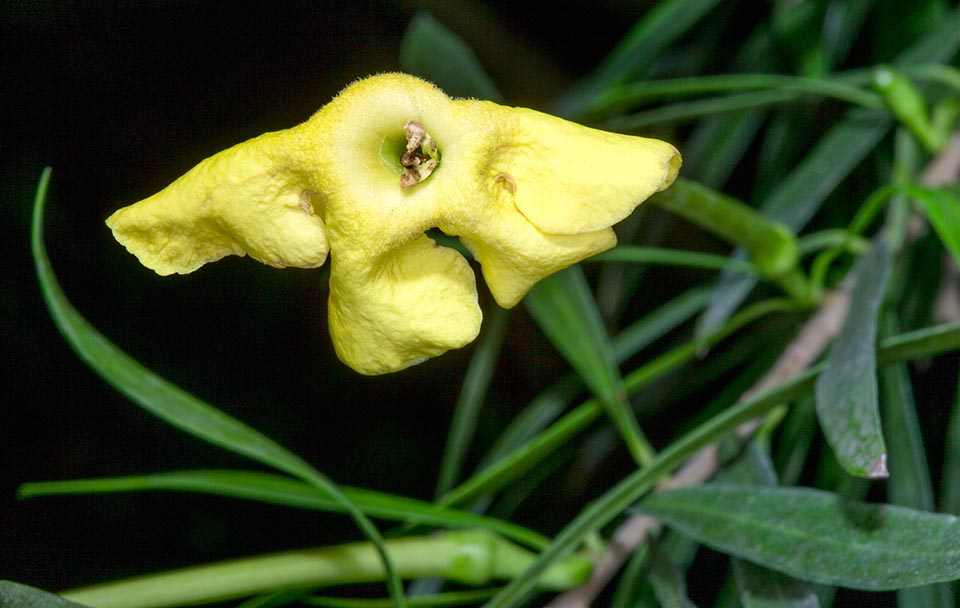Family : Solanaceae

Text © Pietro Puccio

English translation by Mario Beltramini

Brunfelsia densifolia is an evergreen shrub or tree of 6-10 m, very ramified, endemic to the forest of Maricao in Puerto Rico where it grows on serpentinous soils, arid, poor of nutrients and rich of toxic elements © G. Mazza
The species is endemic to Puerto Rico where it grows in the Maricao Forest on serpentinous soils, arid, poor of nutrients and rich of toxic elements for the plants (magnesium, nickel, boron, chromium, etc.), between 600 and 800 m of altitude.
The genus is dedicated to the German botanist Otto Brunfels (ca. 1488-1534), considered as one of the fathers of botany.
The name of the species is the combination of the Latin adjective “densus, a, um” = dense, thick and of the substantive “folium, ii”= leaf, with obvious reference.
Common names: serpentine hill raintree (English).
The Brunfelsia densifolia Krug & Urb. (1895) is an evergreen shrub or tree, very ramified, with leaves, on a 0,4-0,8 cm long petiole, alternate, close, simple, oblong-linear to linear-lanceolate with acute or obtuse apex, long attenuated base and entire margin, 5-10 cm long and 0,4-0,9 cm broad, coriaceous, of glossy intense green colour.
Bisexual terminal flowers, solitary, on an about 1 cm long peduncle, with campanulate calyx, about 0,7 cm long, with five ovate lobes, imbutiform corolla with thin corolline tube, 10-14 cm long, and 5 unequal lobes, obovate to almost circular, spread or retroflexed, about 12 cm long, initially of white colour turning later to yellow, and 4 stamens, two fertile and 2 sterile.
The flowers emanate an intense scent during the night hours.
The fruits are globose, of about 2 cm of diameter, fleshy, initially of green colour, then orange yellow when ripe, containing numerous brown seeds.
It propagates by seed, just interred in draining loam maintained humid at the temperature of 25-28 °C, with a germination times of 1-2 months, air layering and semi-woody cutting.

Close-up of the dense fronds, full of leaves as the scientific name suggests, with flowers and fruits of 2 cm of diameter, green and then orange yellow when ripe © G. Mazza
Species rare in nature, where it grows in a restricted area menaced by the expansion of the agriculturale activities, and even in cultivation, interesting because of the intensely perfumed blooming that in the tropics lasts the whole year, with a top in spring-summer, and the adaptability to any type of soil, provided draining.

The flower, perfumed the night is odd, to say the least, with a corolla with unequal lobes, spread or retroflexed, and a long thin corolline tube of 10-14 cm © Giuseppe Mazza
It bears drought periods, but little resists to the low temperatures, up to -2/-3 °C when adult, can therefore be cultivated in the tropical, subtropical regions and marginally in those with milder temperate warm climate, where temperatures just below 0 °C are short lasting exceptions.
All parts of the plant contain toxic alkaloids.
→ To appreciate the biodiversity within the SOLANACEAE family please click here.
